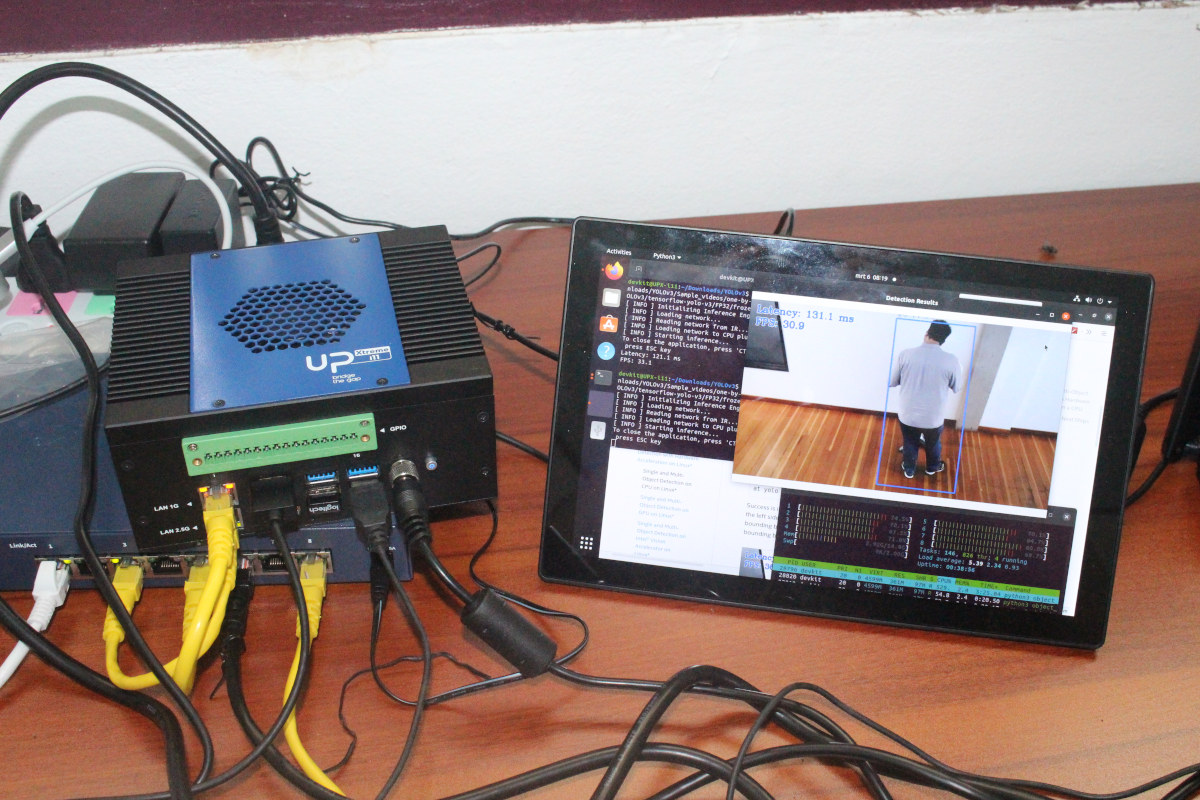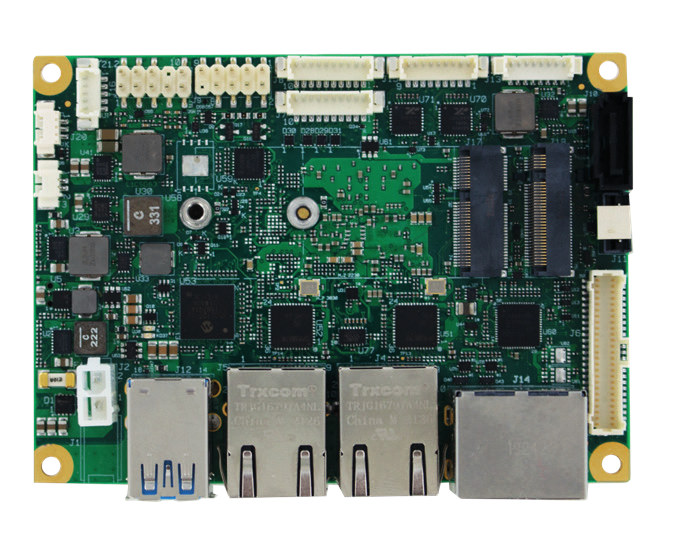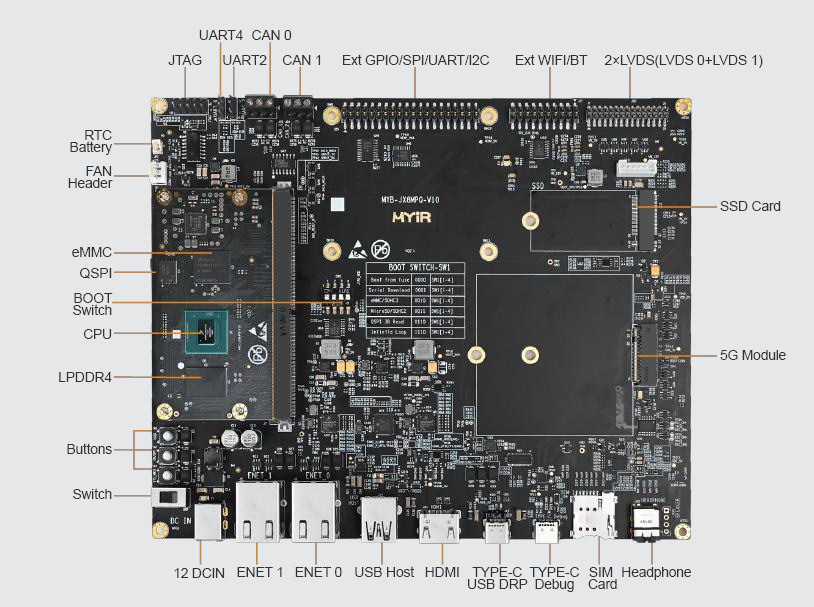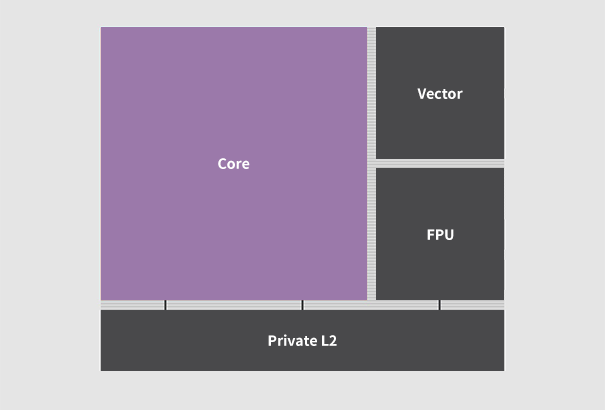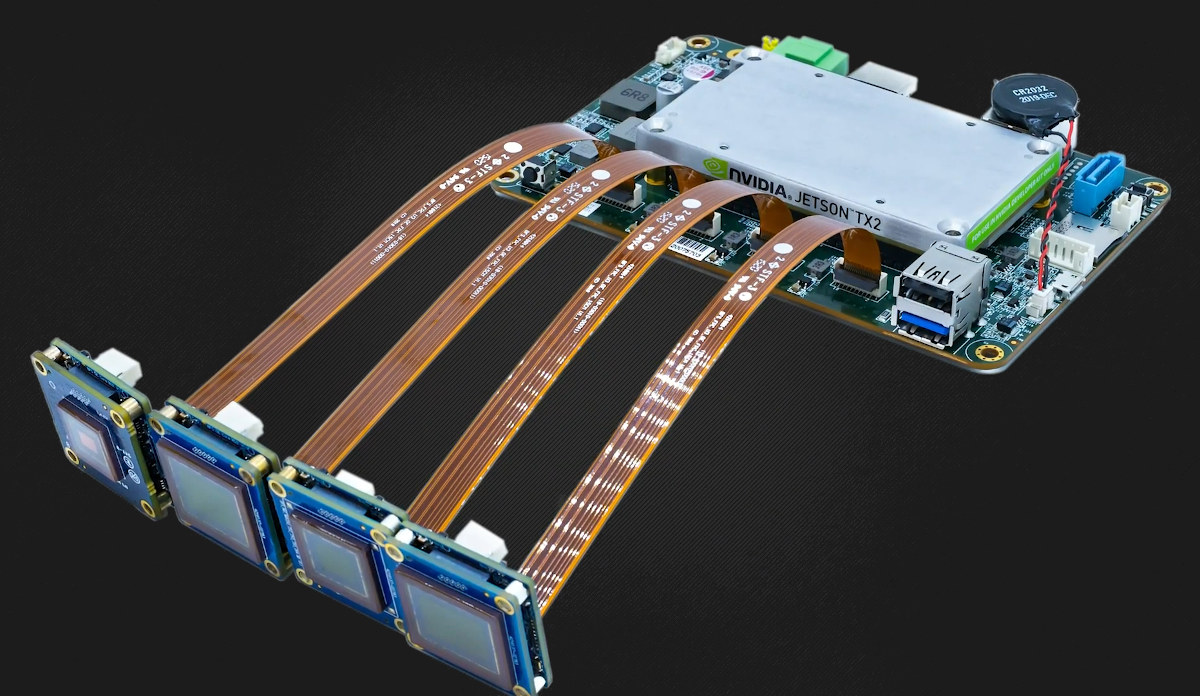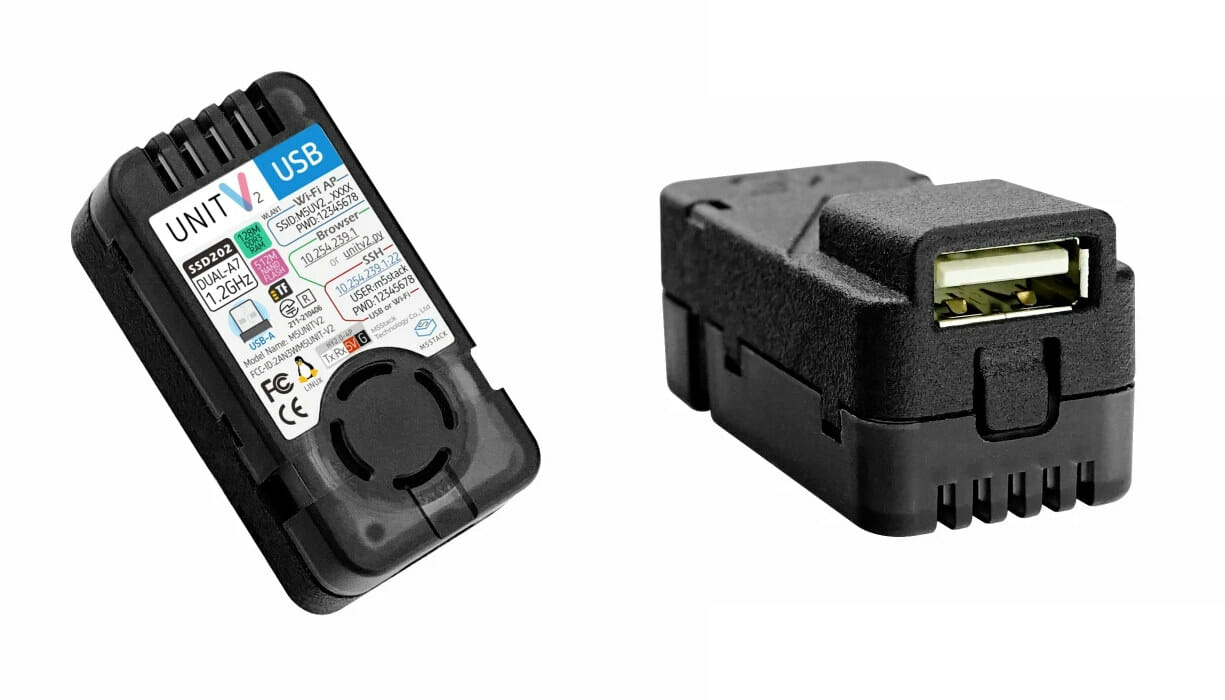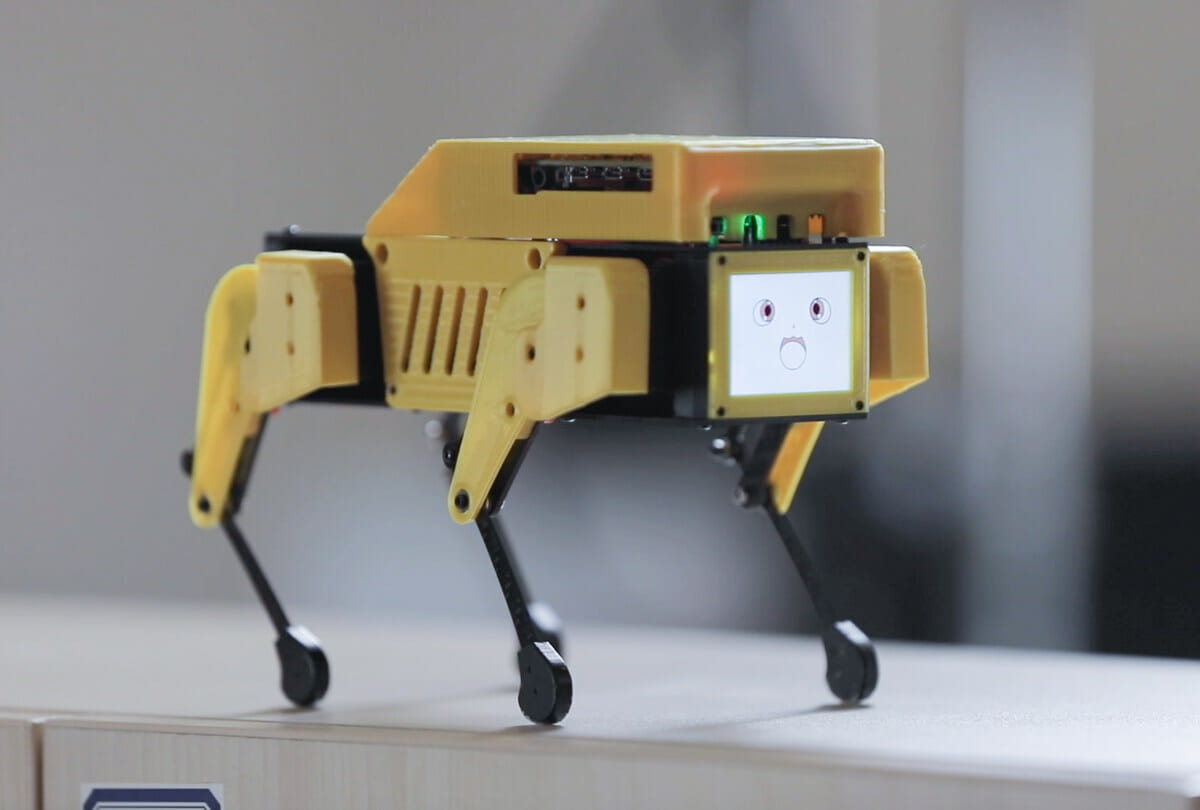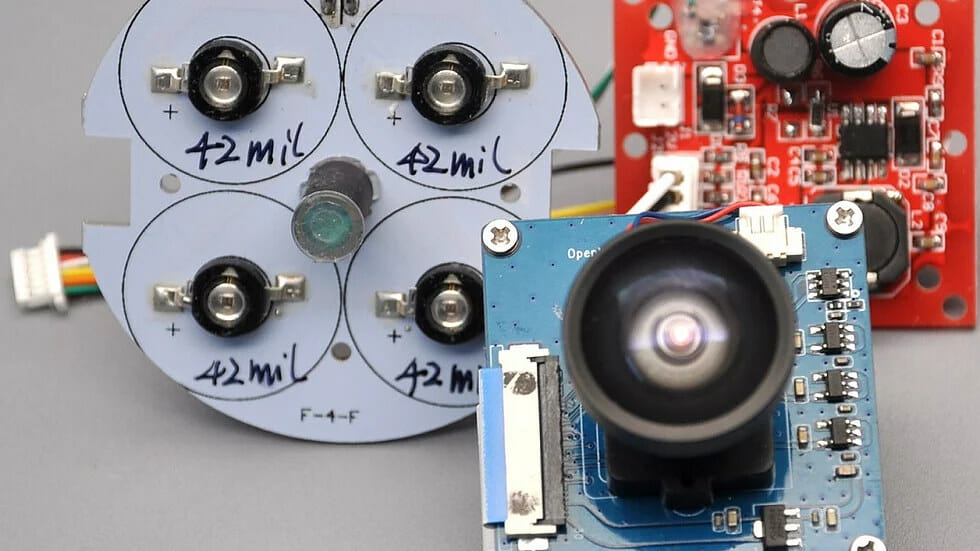UP Xtreme i11 is both a single board computer and a mini PC powered by an Intel Tiger Lake processor and designed for industrial edge applications. I received the one sample of the mini PC called “UP Xtreme i11 Edge Compute Enabling Kit” last December based on an Intel Core i7-1185GRE processor, fitted with 16GB RAM, a 128GB SSD, and pre-loaded with Ubuntu 20.04 operating system. I’ve now had more time to play with the system, and I’ll report my experience with Ubuntu 20.04 and Edge Insights for Vision, a computer vision framework that’s part of the getting started guide. The latter was missing from my package possibly because customs opened the package, and forgot to put it back in. The most important part is “devkit” is used as username and password. Software for UP Xtreme i11 and Fan Control While Ubuntu 20.04 is pre-installed on the mini PC, it’s […]
ICARUS Elkhart Lake Pico-ITX board targets IoT, AIoT, and computer vision applications
SECO ICARUS is a Pico-ITX single board computer based on Intel Atom x6000E, Celeron, and Pentium Elkhart Lake processor that’s designed for edge IoT, AIoT, and computer vision applications. The SBC ships with up to 16GB DDR4 IBECC (in-band error-correcting code) memory, eMMC flash and/or SATA storage, supports up to three independent displays, features two Gigabit Ethernet ports with TSN support, M.2 sockets for WiFi/Bluetooth and cellular connectivity, several USB ports, serial ports, and other I/O interfaces. ICARUS specifications: Elkhart Lake SoC (one or the other) with Intel Gen11 UHD Graphics Intel Celeron J6413 quad-core processor @ 1.8GHz (3GHz Turbo); 10W TDP Intel Celeron N6211 dual-core processor @ 1.2GHz (3GHz Turbo); 6.5W TDP Intel Pentium J6426 quad-core processor @ 2.0GHz (3GHz Turbo); 10W TDP Intel Pentium N6415 quad-core processor @ 1.2GHz (3GHz Turbo); 6.5W TDP Intel Atom x6211E dual-core processor @ 1.3GHz (3GHz Turbo); 6W TDP w/ IBECC and IHS […]
MYIR introduces i.MX 8M Plus module and devkit with AI/ML capabilities
There are already plenty of i.MX 8M Plus systems-on-module, but here’s one more courtesy of MYIR Tech with MYC-JX8MPQ i.MX 8M Plus module with as well as MYD-JX8MPQ development board for evaluating the solution. The module is especially well suited to applications leveraging Artificial Intelligence (AI) and Machine Learning (ML) with the NXP Cortex-A53/M7 integrating a 2.3 TOPS Neural Processing Unit (NPU). The module comes with up to 6GB LPDDR4, 128GB eMMC flash, 32MB QSPI flash, a PMIC for power management, as well as a 314-pin MXM 3.0 connector exposing the I/Os from the processor. MYC-JX8MPQ module specifications: SoC – NXP i.MX 8M Plus (MIMX8ML8CVNKZAB) quad-core Cortex-A53 processor @ 1.6 GHz, real-time Arm Cortex-M7 co-processor @ 800 MHz, 2.3 TOPS AI accelerator, 2D/3D GPU, HiFi4 Audio DSP, and 1080p VPU System Memory – 3GB LPDDR4 (option up to 6GB) Storage – 8GB eMMC flash (option up to 128GB), 32MB QSPI […]
StarFive Dubhe 64-bit RISC-V core to be found in 12nm, 2 GHz processors
StarFive has just announced customers’ delivery of the 64-bit RISC-V Dubhe core based on RV64GC ISA plus bit manipulation, user-level interrupts, as well as the latest Vector 1.0 (V) and Hypervisor (H) instructions. StarFive Dubhe can be clocked up to 2 GHz on a 12nm TSMC process node, and the company also released performance numbers with a SPECint2006 score of 8.9/GHz, a Dhrystone score of 6.6 DMIPS/MHz, and a CoreMark score of 7.6/MHz. A third-party source told CNX Software it should be equivalent to the SiFive Performance P550 RISC-V core announced last summer, itself comparable to Cortex-A75. StarFive Dubhe highlights: Typical frequency – 2.0 GHz @ TSMC 12nm “Industry-leading” Power and Area Efficiency (TSMC 12nm) RISC-V Vector Extension Data types: floating point, fixed point and integer VLEN=128-1024bits ALU & data path width=128 or 256 bits Full vector register grouping (LMUL) support RISC-V Virtualization Extension Pre-integrated Multi-Core with Memory Coherency Support […]
Teledyne FLIR Quartet Jetson TX2 carrier board supports up to four USB 3.0 cameras
There are already plenty of NVIDIA Jetson-based camera solutions from carrier boards to IP67 rugged cameras, but Teledyne FLIR has decided to launch its own with the Quartet carrier board for the Jetson TX2 module. The Quarter board is not designed to work with the thermal cameras the company is known for, but instead FLIR Blackfly S USB3 cameras designed for machine vision. Besides four TF38 USB 3.0 connectors, the carrier board also offers a SATA storage interface, HDMI video output, and extra USB Type-A ports for other peripherals. Teledyne FLIR Quartet (P/N ACC-01-6003) specifications: Supported SoMs – NVIDIA Jetson TX2, Jetson TX2i module Storage – SATA III connector, MicroSD card slot Video Output – 1x HDMI Type-A port up to 4Kp60 Camera Inputs – 4x USB 3.0 TF38 ports Other USB ports – 1x USB 3.0 Type-A port, 1x USB 2.0 Type-A port, 1x micro USB OTG port Misc […]
M5Stack UnitV2 AI module gets USB camera and M12 camera versions
M5Stack UnitV2 is an ultra-compact Linux AI camera powered on Sigmastar SSD202D SoC with a dual-core Cortex-A7 processor @ 1.2 GHz, and 128MB on-chip DDR3 that was launched in April 2021 with a Full HD camera featuring a 68° field-of-view. M5Stack has now introduced two new models, one called M5Stack UnitV2 USB without any camera at all, instead relying on an external USB UVC camera, and the other named M5Stack UnitV2 M12 equipped with an M12 socket and shipping with both a normal focal length camera with an 85° FoV and wide-angle focal length with a 150° FoV. M5Stack UnitV2 USB M5Stack Unitv2 USB specifications: SoC – SigmaStar SSD202D dual-core Cortex-A7 processor @ 1.2 GHz with 128MB on-chip DDR3 Storage – 512MB on-chip NAND flash with around 100MB free space, MicroSD card socket Camera – N/A Audio – Built-in microphone Connectivity – 2.4GHz WIFi 4 up to 150 Mbps (RTL8188FTV), […]
Mini Pupper – Raspberry Pi 4-based robot dog teaches ROS, SLAM, navigation, computer vision (Crowdfunding)
Mini Pupper is a Raspberry Pi 4 powered robot dog inspired by Stanford Pupper open-source quadruped robot, and designed in “light collaboration” with Nathan Kau, the original creator of Stanford Pupper. Just like the original design, MangDang’s Mini Pupper is open-source, based on Ubuntu and ROS (Robot Operating System), and designed for robotics education in schools, homeschool families, enthusiasts and others, with notably students being able to learn out to use ROS, SLAM, navigation, and OpenCV computer vision through online courses that will come with the robot. Mini Pupper key features and specifications: SBC – Raspberry Pi 4 Model B with 2GB RAM Storage – 2GB microSD card Display – 320×240 LCD for facial animation Camera – Support for OpenCV AI Kit Lite 12 DOF via MangDang’s custom servos Optional Lidar module for SLAM (Simultaneous localization and mapping) Battery – 800 mAh Charger – Input voltage – 100-240V AC 50/60Hz, […]
OpenNCC Nighthawk – A face blurring AI camera based on Myriad X VPU
We’ve just written about OpenCV Ai Kit Lite computer vision camera based on Intel Myriad X VPU, and OpenNCC Nighthawk is another such programmable camera based on the Intel AI accelerator, but with an IR filter for night vision, and working with OpenNCC-SDK notably supporting real-time face blurring for enhanced privacy. OpenNCC Nighthawk specifications: VPU – Intel Movidius Myriad X MA2085 up to 4 TOPS RAM – 8 Gbits (1GB) LPDDR4 Camera 2MP camera up to 1920 x 1080 @ up to 30fps ~114° Field of View (DFOV) 2.2mm focal length Lens TTL (through the lense) – 24mm Mount – M12 x 0.5mm thread size Day&Night IR Filter – Solenoid excitation type, automatically switch between 0.1~2 lux IR LED – 850nm up to 5m Output Data format – YUV420, YUV422, MJPG, H.264 Misc – Reset, GPIO Host Interface – USB 3.1 TYPE-C port Temperature Range – 0°- 50° The camera […]


